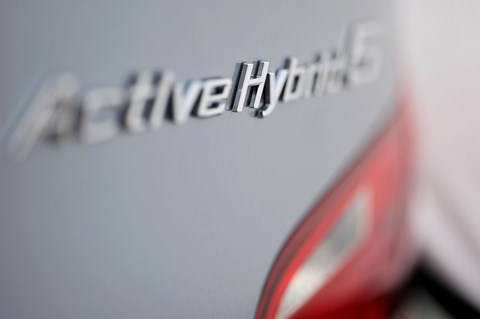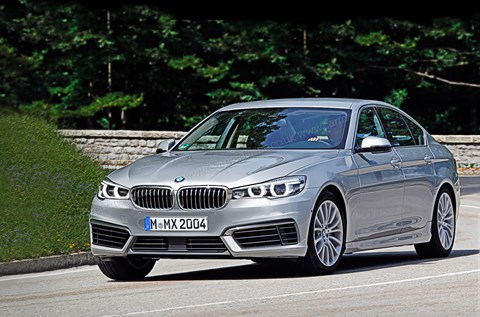► New 5-series and E-class land in 2016
► We compare the two German execs
► Exclusive scoop info on each
In 2016, the gloves come off for Round Seven of the eternal duel between BMW 5-series and Mercedes E-class. And it’s shaping up to be quite a fight.
That the next-generation business-class saloons are going to move much closer together in technology should come as no surprise; a tougher legislative environment brings more stringent emissions regs, the need to further boost comfort and safety, and the demand for more product proliferation.
Although Audi is catching up fast with its A6/A7 range, Mercedes and BMW still dominate the near-luxury segment. While we must wait until 2018 for the follow-up to the A6/A7, the new 5-series (inspired by the high-tech 7-series) and the next E-class (closely related to the S-class) are both due at the tail end of 2016.
Here’s what to expect.
1) MRA vs CLAR platforms: two surprisingly similar modular architectures fight it out

Modularity, scalability and compatibility are key catchwords of modern automotive engineering. In sum, these three elements add up to provide total flexibility and maximum economies of scale. The Merc’s platform is codenamed MRA (Modular Rear-wheel drive Architecture) and CLAR in the case of BMW (short for CLuster ARchitecture).
MRA covers every future Mercedes-Benz model from C-class to Maybach (bar the crossovers), while CLAR is the common genetic denominator for the next 2- to 7-series and for the upcoming SUVs X3 to X7. Both component sets are reportedly between 70 and 150 kilos lighter than the previously used platforms. While the Swabians intend to increase the aluminium content of the totally redesigned MRA hardware, BMW is going one step further. It’ll incorporate reinforcement elements made of carbonfibre, as Project i tech trickles down the range.
Another important benefit of both projects is the superior space utilisation thanks to more efficiently packaged drivetrains and fully integrated auxiliary equipment fed by the supplementary 48-volt electrical system (goodbye to sapping belt drive). Mid-term, we can expect semi-active suspension set-ups with dynamic anti-roll, anti-dive and anti-squat properties as well as an on-demand-ride height adjustment feature. The sophisticated new chassis technology employs electric actuators en lieu of springs and shock absorbers, along with radar-based surface scanners instead of camera-based sensors which neither work at night nor on snow-covered surfaces.
2) GT vs Shooting Brake: road clear for an increasingly diverse model line-up

There is no doubt that the four-door notchback will in the foreseeable future remain the segment’s best-selling bodystyle. Quickly gaining ground are however the long-wheelbase versions of the next E-class (W213), 5-series (G30) and A6 (AU58X) which together already account for over 100,000 sales per year in China.
BMW is tipped to use the long-wheelbase 5-series (G38) as the basis for its new ePower model which fuses a pair of potent electric motors with a petrol-fed 2.0-litre four that acts primarily as range-extender. The sleeker and more spacious new 5-series Touring is also due in 2016, which should again be particularly popular with European customers. The very first 5-series variant to see the light may well be the second-edition GT, a declared favourite of outgoing chairman Norbert Reithofer. Unlike the plump and ungainly initial effort, the replacement is said to blend clever packaging with elegant proportions.
What the 6-series Gran Coupé and the 5-series GT are to BMW, the CLS and its Shooting Brake sidekick are to Mercedes. Again part of the E-class family are the new coupe and convertible which are set to grow almost one full size to seat four adults in comfort and to set themselves apart from their more compact C-class counterparts. BMW retains the 6-series moniker for the more upmarket coupes and convertibles which are going to be lighter, sportier and roomier than the models they will replace in 2017.
3) Electromobility vs combustion engines: the secret to success is in the mix

Mercedes will launch 10 new plug-in hybrids (PHEV) by 2017. Among them are three E-class derivatives: a mix of 2.0-litre four-pots and 82bhp e-motor, a US-only blend of 3.0-litre V6 and 109bhp e-machine, and a still-to-be defined Europe-only PHEV diesel which will be added later in the lifecycle. Not surprisingly, the PHEV application of the new 5-series also fuses a 2.0-litre four with a near-silent 82bhp support unit. In a second step, BMW will adjust the size of the e-motor, the output of the combustion engine and the performance of the battery pack for reduced consumption or extended range.
Both brands are in 2017 going to introduce the aforementioned 48V electrical system which consists of three fully integrated energy modules: brake energy recuperation, energy storage via lithium-ion batteries, and energy consumers like water pump, power steering and AC compressor. On top of all this, one or two electrically operated turbochargers will be added to provide an instant boost effect, speed up the throttle response, add plenty of low-end padding to the torque curve and improve the overall efficiency.
With the launch of the new E-class, Mercedes will start phasing out the V6 engines in favour of brand-new cheaper-to-build modular in-line sixes in petrol and diesel form which are closely related to the corresponding fours. Out first is the 2.9-litre diesel which develops 313bhp in twin-turbo guise and over 400bhp when motivated by four chargers, two of them battery-driven. At the bottom end of the E-class range, we find a new 122bhp 1.6-litre four which is said to average 99g CO2/100km. As it happens, exactly the same target consumption is expected for the next 520d.
4) Active driving vs autonomous driving: the unstoppable invasion of new assistance systems

Although the two arch rivals firmly believe in distinctly different lighting technologies – BMW favours laser tech, Mercedes a comprehensive LED evolution – they plan to introduce almost simultaneously a broad selection of virtually identical driver assistance systems. Among them are about half a dozen partly or fully automatic parking aids including remote-control manoeuvring in confined spaces, predicative driving governed by sat-nav information and car-to-car communication, a scalable choice of touchscreen interaction and gesture control, the collection of real-time infrastructure information with the help of specialist partners, improved voice control, traffic light recognition, lane changing and overtaking assist, crossroads monitoring with steering and brake intervention, a so-called autobahn assistant which can be left alone at speeds of up to 80mph and the integration of augmented reality features in the extended head-up display. Pause for breath…
It is worth noting that every autopilot function has to be activated and switched off by the driver who must be prepared to take over should a critical situation arise. While the brands’ bespoke software can help to emphasise individual priorities, the hardware will likely be less of a deciding factor since it tends to become available almost simultaneously from the same systems suppliers. This trend may also affect the next 5-series and E-class hybrid models where a clever standardised control unit is expected to fuse the currently separate drive modes and operating programmes – another example of what can only be described as a high-level dead heat.